Sustainable development has become a global consensus, and fashion industry as an important carrier of people's great life, when the two meet, it will usher in new opportunities for industrial change. Sustainable will not only reshape the business ecology of the fashion industry, but will also create unlimited possibilities for the fashion industry. What is the way forward for sustainable design? How can fashion design be created in a cycle? How should local designers and brands practice sustainable fashion? How can all parties in the society form a synergy for sustainable fashion? Shanghai, at the forefront of fashion, is riding the wave and singing.
The year 2020 is the tenth year for Shanghai to join the UNESCO Creative Cities Network (UCCN) and being awarded the title of Design Capital. In the past ten years, the added value of Shanghai's fashion industry has increased rapidly, from 14.352 billion yuan in 2012 to 43.88 billion yuan in 2019. Shanghai has become a testing ground for international fashion brands to optimize their layout and is becoming the first place for global trends, as well as a major target consumer market for fashionable smart goods.

In order to summarize the ten-year experience of Shanghai fashion design construction and discuss the road of sustainable fashion development in Shanghai, on November 22nd, Shanghai Economic and Information Commission, Changning District People's Government and Donghua University hosted the forum, which was co-organized by UNESCO Creative City (Shanghai) Promotion Office, Donghua University Glorious Sun School of Business and Management, Donghua University School of Fashion and Art Design, Changning District Business Committee and Hongqiao Fashion Creative Industry Alliance. The Sustainable Fashion: The commercial ecological force of design Reengineering forum was held in Shanghai. Sun Huaibin, Vice President of China Textile Industry Federation, Wu Jincheng, Director of Shanghai Municipal Economic and Information Commission, Wang Lan, deputy secretary and head of Changning District Committee of Shanghai Municipality, Yu Jianyong, Academician of Chinese Academy of Engineering and President of Donghua University, Liu Boying, Deputy Director of Shanghai Cultural and Creative Industries Promotion Leading Group Office, Zhong Xiaomin, member of Standing Committee of Changning District CPC Committee and vice president of Changning District of Shanghai, and Chen Ge, Vice President of Donghua University attended this forum.
Sustainable fashion involves the whole fashion system, as well as the society, culture and ecology related to this system. Representatives from government departments and industry organizations, managers of famous fashion enterprises at home and abroad, scholars from internationally renowned universities, top design experts from home and abroad, and professional media from the industry gathered here to discuss the breakthrough of sustainable fashion design and the sustainable dynamics of economic development.
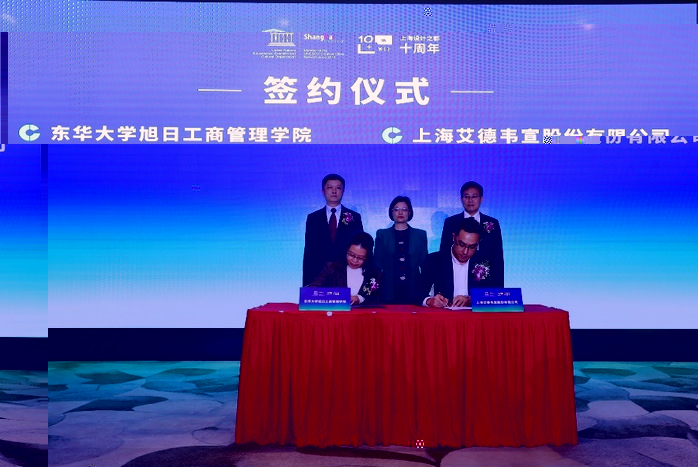
(Donghua University Glorious Sun School of Business and Management and Shanghai Edelweisson Co., Ltd. signed a school-enterprise cooperation agreement)
How can brands develop with the concept of sustainability? Ye Shouzeng, chairman of Shanghai Zhihe fashion industry (Group) Co., Ltd, shared the natural way of ICICLE, which consists of respecting the sky, cherishing things, loving people and inheritance. The Nature's Way of ICICLE: select high-quality raw materials from nature and return to the original point to think about creation. Out of concern for the sustainability of the industrial chain, we regard manufacturing as the core competitiveness of the brand, and at the same time believe that caring for the workers in the industrial chain is the sustainable industry. Ye Shouzeng said that inheriting and developing the spirit of the East and making it contemporary is also an important concept that Zhihe insists on.

(Ye Shouzeng, chairman of Shanghai Zhihe fashion industry (Group) Co., Ltd)
The only way to reverse the impact on society and the environment is to transform the industry and consumption patterns. From brands to consumers, thinking about sustainable fashion, Yang Min, CEO of WWD International Fashion News China, said that everyone in the supply chain, design, flexible manufacturing, consumption, recycling and waste chain is an integral part of sustainable fashion. The development of sustainable fashion requires multiple platforms for scientific research, education and training, resource matching, and consumer fields, allowing the power of design to cross borders.
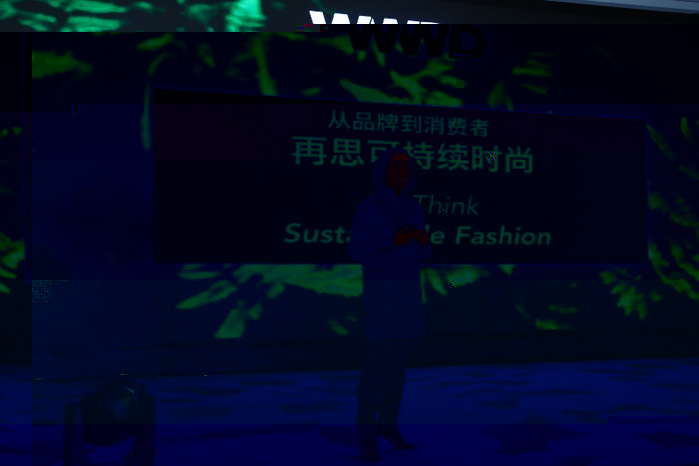
(Yang Min, CEO of WWD International Fashion News China)
The University of Cambridge Sustainability Leadership Institute has been working extensively with enterprise, government and financial leaders to help them structure their organizations, industries and shape public policy to achieve more sustainable economic development. Eithne George, Director of the Institute's Strategic Development and Business Incubator, joins the discussion by video: Wanting to build sustainable, inclusive and resilient societies requires rapid and significant change in the way we move forward. Smart innovation and creative thinking will be the catalyst for this change. Shanghai and Cambridge can work together to promote innovation in sustainable development and look forward to further collaboration in this area.
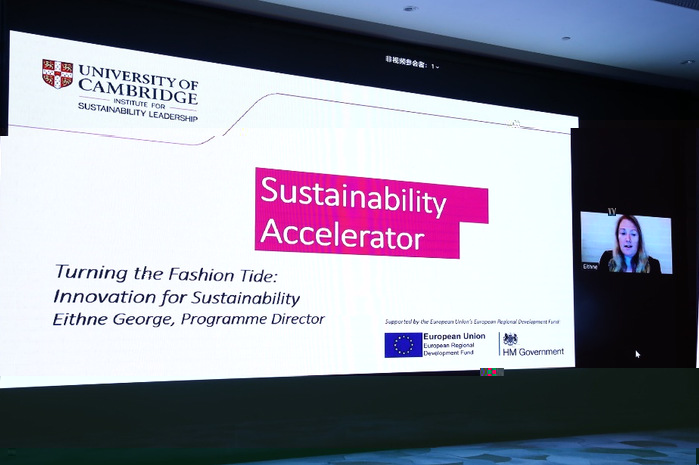
(Eithne George, Director of Strategic Development and Business Incubator, Cambridge Institute for Sustainable Leadership)
What are the unique design meanings in Chinese traditional wisdom and life aesthetics? In the analysis of Sustainable Design Change in the Modern East, Wu Bin, the founder of WS Shi Zun/Wu Jian Design, said that in the rapid development of technology, people need to find a sense of balance in their psychology, and people are increasingly seeking the beauty of the past. The continuation of culture is also a kind of sustainability. Combining national culture with modern culture to present more inspiring designs is also a part of sustainability.
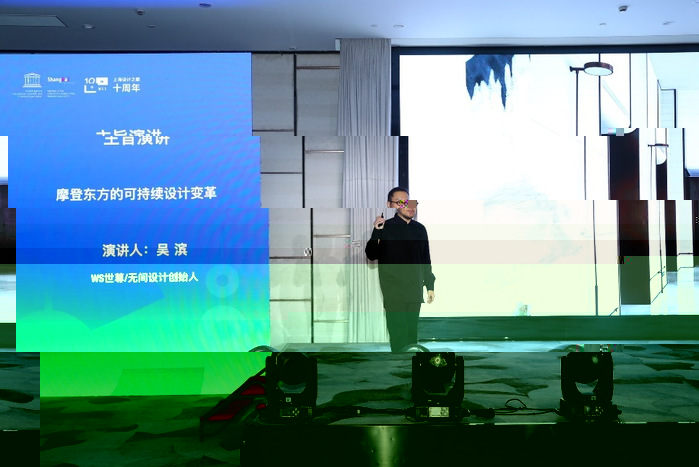
(Wu Bin, the founder of WS Shi Zun/Wu Jian Design)
Design thinking is crucial to the circular economy. All products are designed, and the most important decisions are usually made during the design period, and once designed, the process cannot be reversed. The Ellen MacArthur Foundation is committed to promoting the global transition to a circular economy. Fan Huaxing’s, the China director of its Circular Fashion Program, she shared the Circular Design Guidelines and International Practices, and introduced the three principles of the circular economy proposed by the foundation: eliminating pollution and waste at the beginning of design, maximizing the life cycle of products and materials, and renewable natural resources, providing a path for companies and designers to achieve circular design.
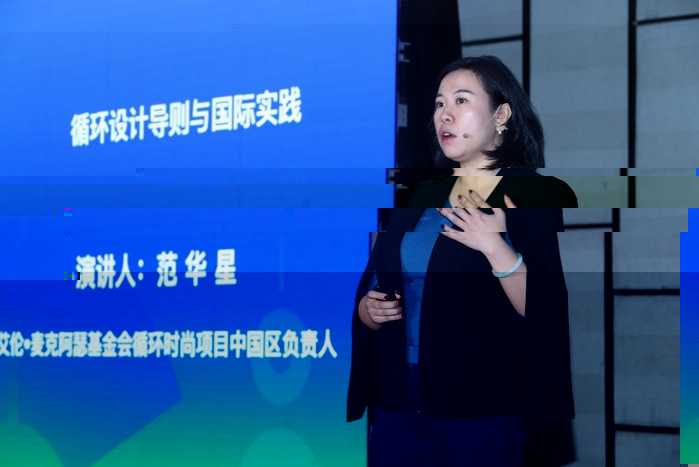
(Ms. Fan Huaxing, Head of the Ellen MacArthur Foundation's Circular Fashion Program in China)
Design is the core driver of sustainable fashion, yet sustainable fashion is more than design, not only the fashion industry itself, but also the participation of multiple parties including companies, consumers, decision makers, researchers, scientists, retailers, media and development cooperation agencies, and is a comprehensive expression of the fashion value chain. In view of this, Liu Changkui, vice present of Donghua University Glorious Sun School of Business and Management, leads us to consider the original proposition: Is sustainable fashion found? Can companies necessarily burden with sustainable fashion design? The essence of fashion is to be as new as a maniac, and the essence of business is to gain profits, while the essence of sustainability is the opposite, it aims to reduce the competition between people and fashion goods consumption, so implementing sustainable development means sacrificing business costs and reducing business profits. We cannot ignore this paradox of sustainability with business and fashion, so how can this paradox be solved? How to find a balance between the three?
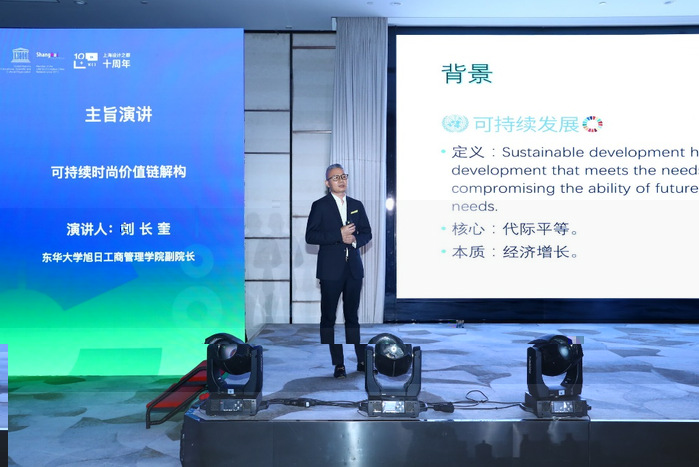
(Liu Changkui, vice present of Glorious Sun School of Business and Management, Donghua University)
Liu Changkui makes two key points from the Sustainable Fashion Value Chain Deconstruction: first, identifying value chain hotspots where interventions have the greatest potential to improve the environmental and social impact of the entire system. This is a critical step, enterprises can use their innovative power to design solutions that can help and motivate individuals to have more sustainable living habits, while reducing impact and improving well-being, so as to seek a balance between profit and sustainability; One is the value chain reconstruction, which seeks to seek the participation and cooperation of all actors from production to final consumption. Based on big data and blockchain technology, horizontal and vertical synergies can be made to reconfigure the management, synergy and strategy of the sustainable fashion value chain. The value chain management level is more related to sustainable design, and the synergy level is more closely related to empowerment in the sustainable fashion industry. Only through value chain synergy can we ultimately achieve value empowerment in the sustainable fashion industry at a strategic level of the value chain.
Donghua University is a higher education institution in the field of fashion design and management in China. Relying on Donghua's profound fashion heritage, integrating Shanghai's diversified fashion culture, based on the frontier of fashion management development and gathering the advantageous resources of the fashion industry, Donghua University Glorious Sun School of Business and Management made every effort to build China's first MBA program in the direction of fashion management in 2018, creating a program that combines theoretical teaching and practical application, and a program that combines senior professors and fashion experts. The program aims to create a training model that combines theoretical teaching with practical application, senior professors with fashion experts, and fashion trends with future technology, to build a platform for fashion management education and cultivate outstanding leaders in the fashion industry. The Fashion MBA program of Donghua University will inject senior management talents and industry-academia-research vitality for the construction of Shanghai Design Capital and the sustainable development of Shanghai fashion industry.
Fashion is Shanghai's urban character, design is Shanghai's urban endowment. Sustainable fashion inspires sustainable dynamics, and design re-engineering lights up a better life. This forum was successfully concluded with the professional efforts of government, enterprises, universities, media and social organizations, and was fruitful and highly in line with the United Nations 2030 Sustainable Development Goals. In the future, Shanghai, as the center of China's economy, will do its best to build a design capital with more global influence in the friendly cooperation of global sustainable fashion!

 Donghua University
Donghua University Contact Us
Contact Us


